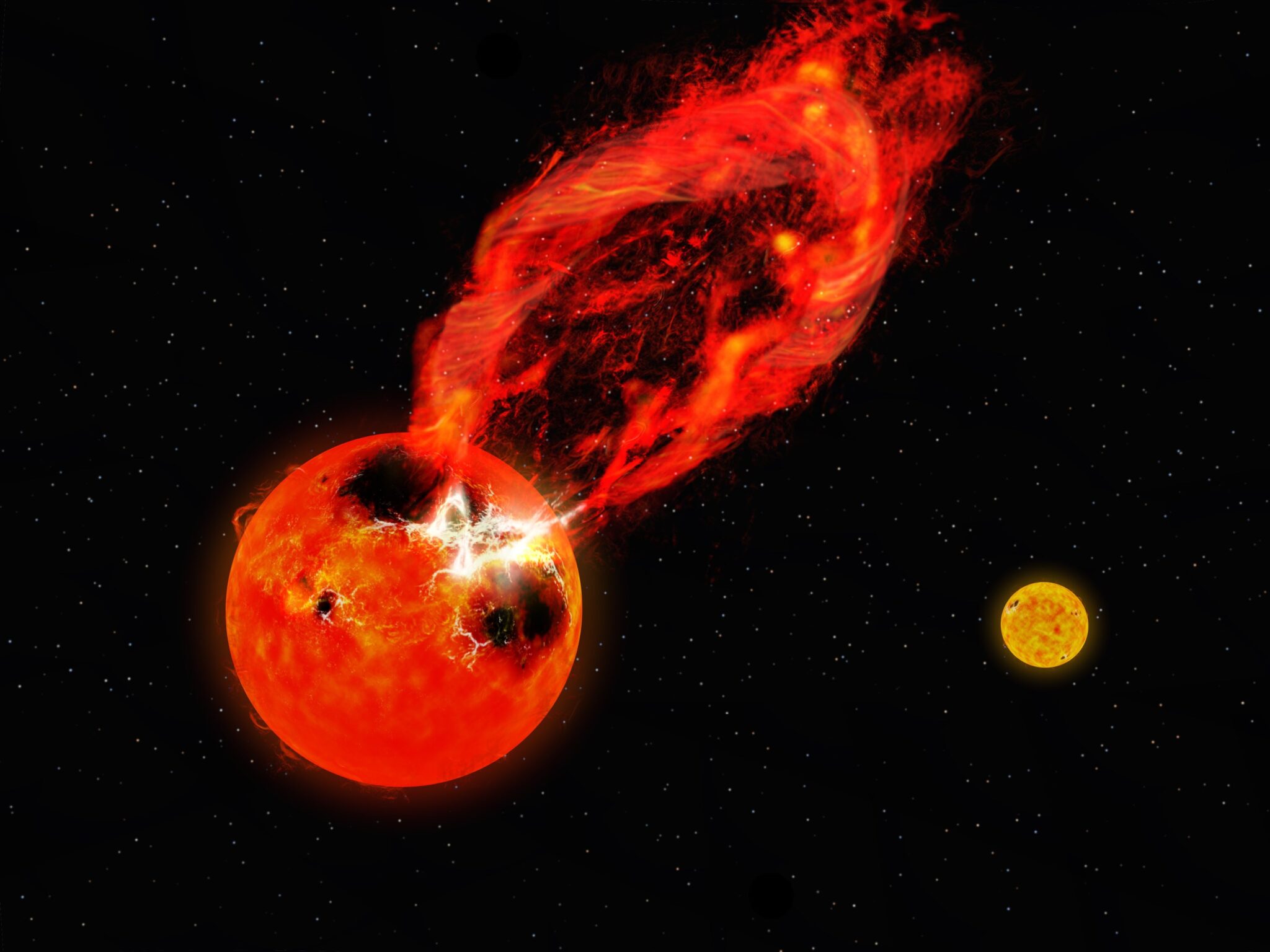Our Sun is gradually approaching its 11-year peak of activity, which will occur in 2025. This means that our star will be more active with an increased number of sunspots and coronal mass ejections. But fortunately for us, the Sun is not as active as the binary star system V1355 Orionis. One of its stars periodically releases such powerful superflares, which are 10 times larger than the largest solar flare ever recorded on the Sun.

Flares on our Sun often cause geomagnetic storms on Earth. They are safe for life on our planet because we are protected by a magnetic field, so we see the effect of the collision of the solar wind in bright atmospheric phenomena called auroras. One of these recently could even be seen over Ukraine. In the worst case, these storms can disable satellites, turn off power grids and disrupt communications.
Flares, destroyers of all life
But powerful superflares like the V1355 Orionis flares can have even worse consequences. Their power is enough to destroy any life on the planets closest to the stars.
A team of astronomers led by Shun Inoue from Kyoto University in Japan observed this binary system using the 3.8-meter Seimei telescope and the Transiting Exoplanet Survey Satellite (TESS). They managed to notice the most powerful prominence they had ever seen. The speed of the ejection was at least 990 km/s, which is three times higher than the second cosmic speed of the star. The coronal mass ejection carried trillions of tons of material into space.
Binary system V1355 Orionis
Stars of type V1355 Orionis are usually magnetically active, and large superflares explode from their surface. They also often have large star spots. Some of them are quite bright in X-rays and radio frequencies. V1355 Orionis has a K- and G-type star. The K star is a subgiant and the source of a superflare.
The superflare V1355 Orionis is useful for understanding not only how they occur, but also the mechanism that causes prominences and flares on our Sun. Further observations should help determine what is happening on the surface and with the magnetic fields of both types of stars.
Earlier we told interesting facts about solar flares.
According to ScienceAlert
Follow us on Twitter to get the most interesting space news in time
https://twitter.com/ust_magazine

